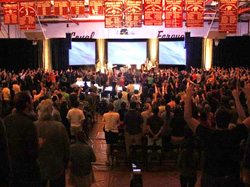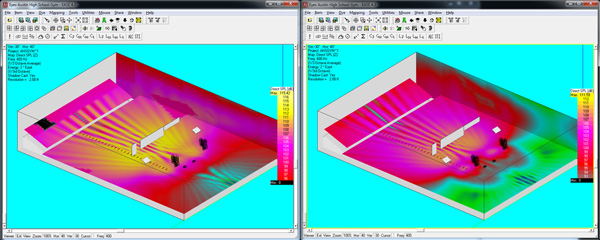Designing an audio system isn’t always as simple as picking your favorite boxes, throwing some amps in racks, and “firing it up.” While favored loudspeakers might indeed be a starting place, there are vital factors that must be addressed, including the coverage needs of the room, characteristics or obstacles in the room that could be problematic, weight limits with respect to flying components, and so on.
Another issue can be the musical “feel” the client is going for. Different loudspeaker designs can have different voicings, some of them better suited for a given genre than others. Specifying the proper tools for the job is no small task, but it doesn’t have to be an overwhelming endeavor.
Over the past year, I’ve worked with these factors, and much more, while designing a mobile system for the Austin Stone Community Church in Austin, TX. Once the homework was done, the results have proven to pay off.
New Direction
The Austin Stone is among a growing demographic of churches that are entirely portable, choosing to utilize a third-party venue instead of incurring the cost of it’s own purpose-built facility. Services are held in the gymnasium of Austin High School, which seats roughly 1,800, with one of the four weekly services broadcast via stream to three satellite campuses.
Located in the heart of Austin, it should be no surprise that the “feel” of the services is rock ‘n’ roll, with big drums and guitars occupying most of the space in the mix. For the last 10 years, the church has rented full audio production – and yes, that means trucking everything in and flying PA on a weekly basis.
As one can imagine, this ends up costing a lot, not to mention other joys associated with rentals such as the occasional miswired rack, forgotten cables or RF antennas, and jamming hardware. In the summer of 2011, the idea was introduced to church leadership about finally purchasing a rig of their own.
The rental system included flown line arrays, subwoofers on the ground, and front fill loudspeakers across the down-stage edge. The main arrays were flown with half-ton motors dead-hung from the steel support beams spanning the gymnasium.
Acoustically, it’s a hostile environment; the large cinder block room spans 140 by 110 feet, and the enormous parallel surfaces lend themselves to a large buildup of energy in the reverberant field. As a result, definition is difficult to achieve across the spectrum.
















